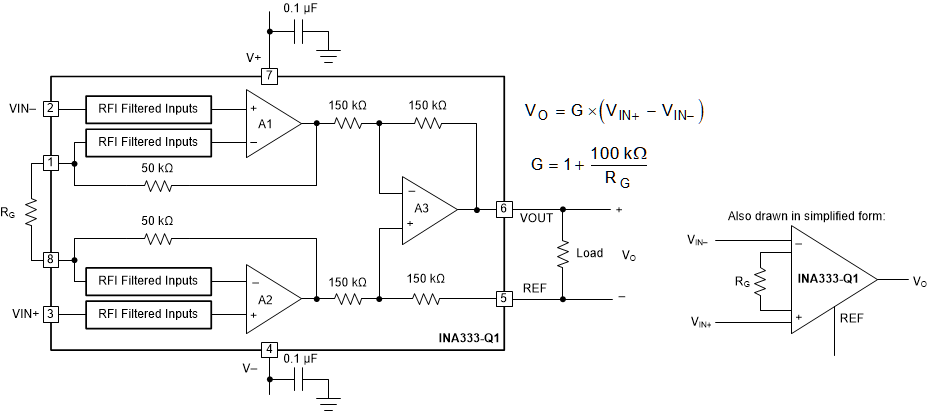ZHCSKC7B september 2019 – june 2023 INA333-Q1
PRODUCTION DATA
- 1
- 1 特性
- 2 应用
- 3 说明
- 4 Revision History
- 5 Pin Configuration and Functions
- 6 Specifications
- 7 Detailed Description
- 8 Application and Implementation
- 9 Device and Documentation Support
- 10Mechanical, Packaging, and Orderable Information
8.2 Typical Application
Figure 8-1 shows the basic connections required for operation of the INA333-Q1. Good layout practice mandates the use of bypass capacitors placed close to the device pins as shown.
The output of the INA333-Q1 is referred to the output reference (REF) pin, which is normally grounded. This connection must be low-impedance to maintain good common-mode rejection. Although 15 Ω or less of stray resistance can be tolerated while maintaining specified CMRR, small stray resistances of tens of ohms in series with the REF pin can cause noticeable degradation in CMRR.
 Figure 8-1 Basic Connections
Figure 8-1 Basic Connections